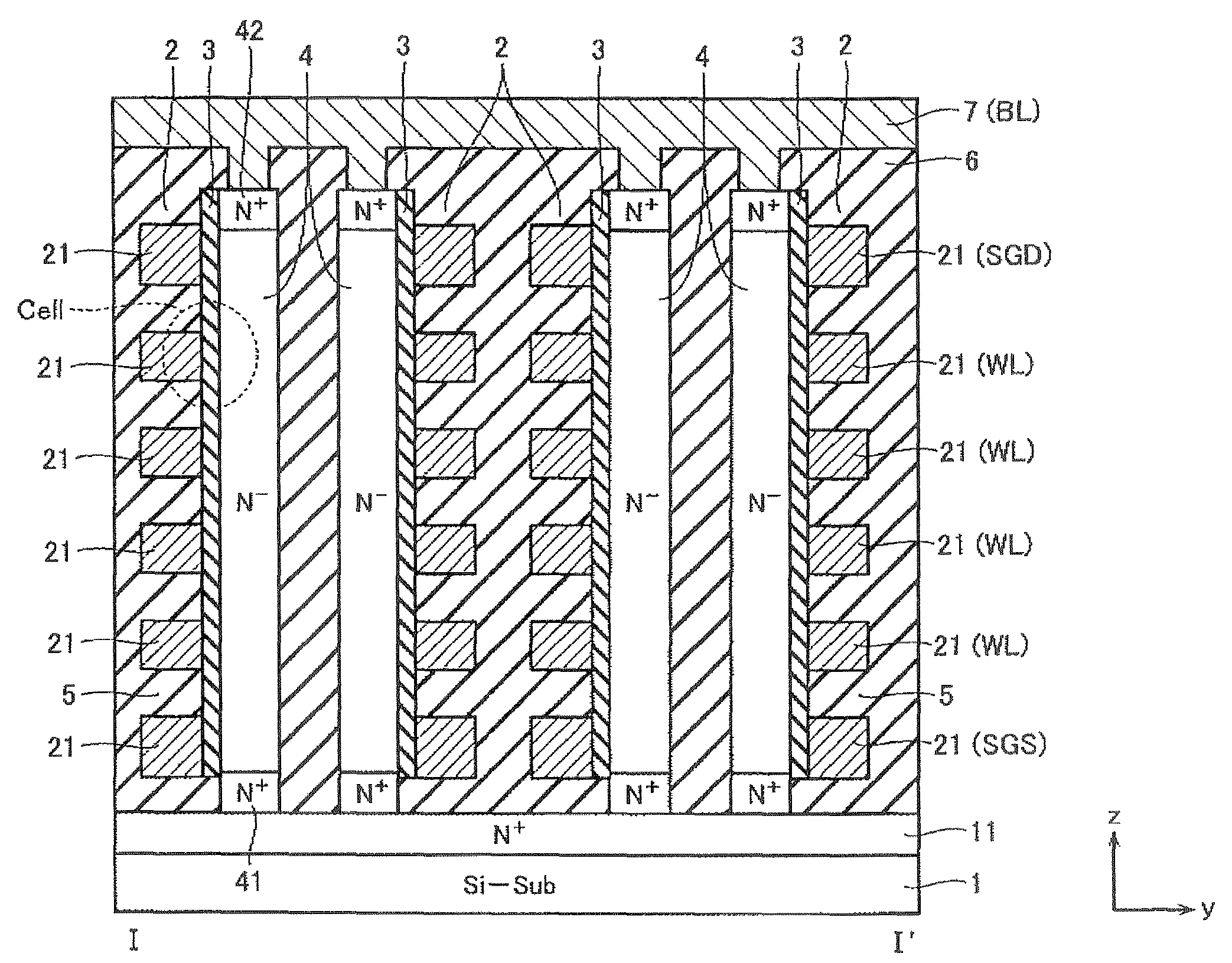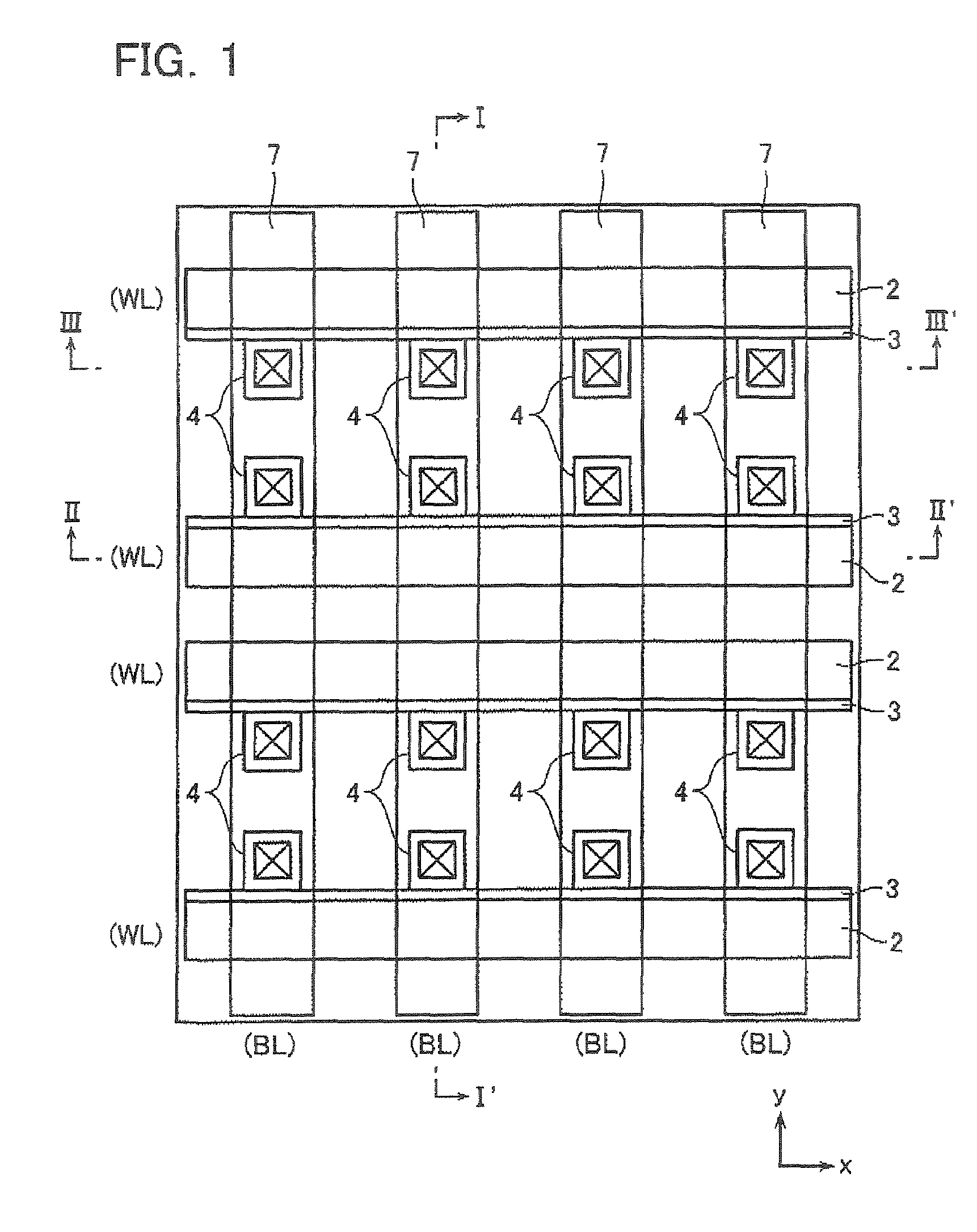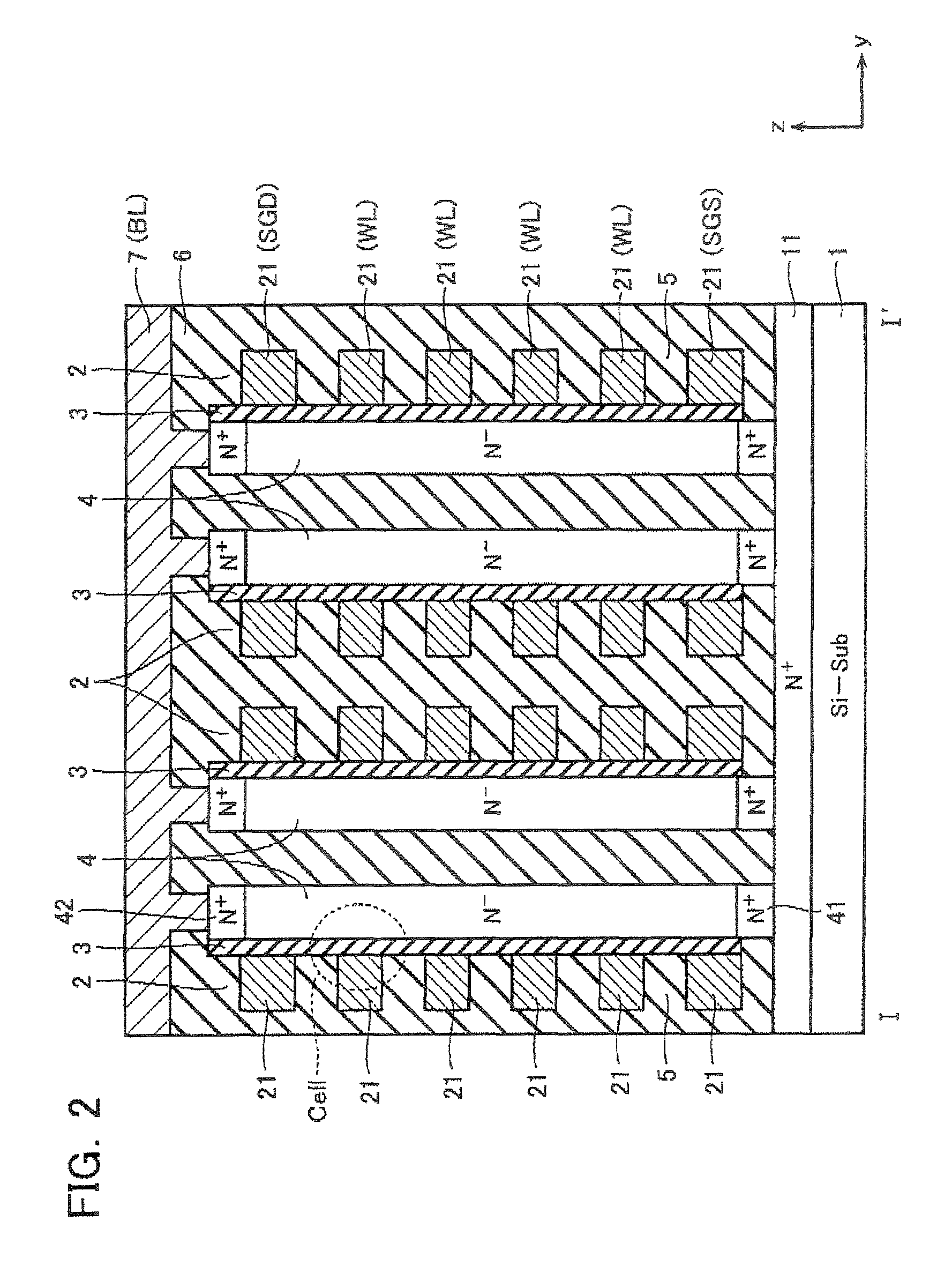Semiconductor memory device including pillar-shaped semiconductor layers and a method of fabricating the same
a semiconductor and memory device technology, applied in semiconductor devices, electrical appliances, instruments, etc., can solve the problems of injuring process reliability, limiting miniaturization, and increasing the memory density based on multi-level storage schemes also has a limit defined by data reliability,
- Summary
- Abstract
- Description
- Claims
- Application Information
AI Technical Summary
Benefits of technology
Problems solved by technology
Method used
Image
Examples
embodiment 1
[0097]FIG. 1 is a plan view of a memory cell array of a NAND-type flash memory In accordance with an embodiment, and FIGS. 2, 3 and 4 are sectional views thereof taken along lines I-I′, II-II′ and III-III′ in FIG. 1, respectively.
[0098]A plurality of gate wiring stack bodies 2 are formed on a silicon substrate 1, each of which has multiple gate wirings 21 stacked and separated from each other with interlayer dielectric films 5 interposed therebetween. Each of the gate wiring stack bodies 2 is patterned as elongated in x-direction in the x-y plane of the substrate 1.
[0099]The gate wirings 21 are formed of a metal film, the resistance of which is lower than that of a polycrystalline silicon film, for example, selected from tungsten (W) aluminum (Al), cupper (Cu), silicide thereof and the like. Alternatively, the gate wirings 21 may be initially formed as polycrystalline silicon wirings, and then reformed as silicide wirings by a salicide (Self Aligned Silicide) step. As a result, it i...
embodiment 2
[0147]FIGS. 23 and 24 are a plan view and I-I′ sectional view thereof, respectively, of a memory cell array in a NAND-type flash memory in accordance with Embodiment 2, which correspond to FIGS. 1 and 2, respectively.
[0148]In Embodiment 1, pillar-shaped silicon layers 4 are disposed in relation with the gate wiring stack bodies 2 in such a manner that one array is opposite to one side surface of a gate wiring stack body; and the following one to the reverse side surface of the following gate wiring stack body. By contrast, in this embodiment, pillar-type silicon layers 4 are disposed opposite to the same side surfaces of the respective gate wiring stack bodies 2.
[0149]Others are the same as in Embodiment 1. That is, one side surface of the pillar-shaped silicon layer 4 is opposite to the gate wiring stack body 2 while the remaining three side surfaces are in contact with device isolating film; II-II′ and is III-III′ sectional views of FIG. 23 are identical with those shown in FIGS. ...
embodiment 3
[0150]FIG. 25 is a plan view of a memory cell array in a NAND-type flash memory in accordance with Embodiment 3, which corresponds to FIG, 1 in Embodiment 1. FIG. 26 is I-I′ sectional view of FIG. 25 II-II′ and III-III′ sectional views of FIG. 25 are identical with those shown in FIGS. 3 and 4; and fabrication processes are the same as in Embodiment 1.
[0151]In Embodiment 1, two arrays of pillar-shaped silicon layers 4 are disposed between two gate wiring stack bodies 2 to be driven with them. By contrast, in this Embodiment 3, adjacent two gate wiring stack bodies share one array of pillar-shaped silicon layers 4. In other words, in Embodiments 1 and 2, one side surface of each pillar-shaped silicon layer 4 is opposite to the gate wiring stack body 2 and the remaining three side surfaces are in contact with the device isolating film, while in this Embodiment 3, opposite side surfaces of the pillar-shaped silicon layer 4 are opposite to adjacent two gate wiring stack bodies 2, respec...
PUM
 Login to View More
Login to View More Abstract
Description
Claims
Application Information
 Login to View More
Login to View More - R&D
- Intellectual Property
- Life Sciences
- Materials
- Tech Scout
- Unparalleled Data Quality
- Higher Quality Content
- 60% Fewer Hallucinations
Browse by: Latest US Patents, China's latest patents, Technical Efficacy Thesaurus, Application Domain, Technology Topic, Popular Technical Reports.
© 2025 PatSnap. All rights reserved.Legal|Privacy policy|Modern Slavery Act Transparency Statement|Sitemap|About US| Contact US: help@patsnap.com



